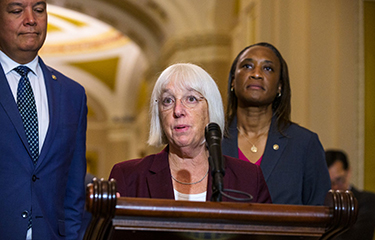The U.S. Senate passed a package of appropriations bills in late October that included funding for the U.S. Food and Drug Administration (FDA) and U.S. Department of Agriculture (USDA).
The legislation includes key provisions for the domestic seafood industry and brings Congress one step closer to providing funding for fiscal-year 2024 and avoiding a government shutdown. Congress agreed to a last-minute deal in September to avert a partial shutdown, but that agreement expires 17 November.
The Senate version of the bill is essentially unchanged from the version passed by the Senate Appropriations Committee in June. The House approved its agriculture appropriations bill in September as part of a last-ditch effort to avoid the partial government shutdown. Lawmakers will need to reconcile differences between the two versions before the appropriations can become law.
Both versions of the legislation include a minimum of USD 15 million (EUR 14 million) in funding for inspections of foreign seafood manufacturers and imported seafood, the same amount provided for fiscal year 2023.
U.S. Senator Rand Paul (R-Kentucky) introduced an amendment proposing significant spending cuts to bring the Senate’s topline funding levels into alignment with the House’s version. The amendment provided USD 10 million (EUR 9.3 million) for inspections of foreign seafood manufacturers and imported seafood, roughly USD 5 million (EUR 4.6 million) less than both the House and Senate versions. The amendment was not adopted in the Senate.
The Senate did adopt an amendment from Sen. Dan Sullivan (R-Alaska) prohibiting the USDA from buying seafood from China for school lunches.
The version passed by House legislation includes a provision that would allow blue catfish processors waivers from the Federal Meat Inspection Act if they were already subject to inspections under the FDA’s Seafood Hazard Analysis Critical Control Points Program.
Reports produced by both the House and Senate appropriations committees in June break down USDA spending and guidance on a more granular level. Both versions provided continued funding for land-based aquaculture and recirculating aquaculture systems (RAS) development. The Senate committee also recommended continued research into aquaculture issues such as disease, genetics, systems, and economics and the creation of domestic shrimp-farming programs.
A group of senators also added language to the report demanding the USDA improve seafood consumption in schools. In 2023, the U.S. Government Accountability Office reported that seafood consumption in schools was below federal guidelines.
The House and Senate are closer in agreement on funding for the FDA within the agriculture appropriations bills. Both appropriations committees recommended bills with approximately USD 3.5 billion (EUR 3.3 million) in FDA funding. A difference of USD 20 million (EUR 19 million) separates the two versions.
Both committee reports included language directing the FDA to clarify how producers should label plant-based and vegan seafood alternatives.
The Senate version also required the FDA to update its seafood consumption suggestions for pregnant women and young children, an effort the FDA has already begun.
Lawmakers face a bigger battle in reconciling House and Senate proposals for funding NOAA Fisheries. The Senate wants to allocate USD 1.1 billion (EUR 978 million) for NOAA Fisheries, 3.6 percent less than the agency requested and 1.7 percent less than what was appropriated for fiscal 2023. The House has not specified how much it wants to allocate for NOAA Fisheries, but has proposed a 12 percent cut to NOAA's topline funding level.
Photo courtesy of the Office of U.S. Senator Patty Murray







